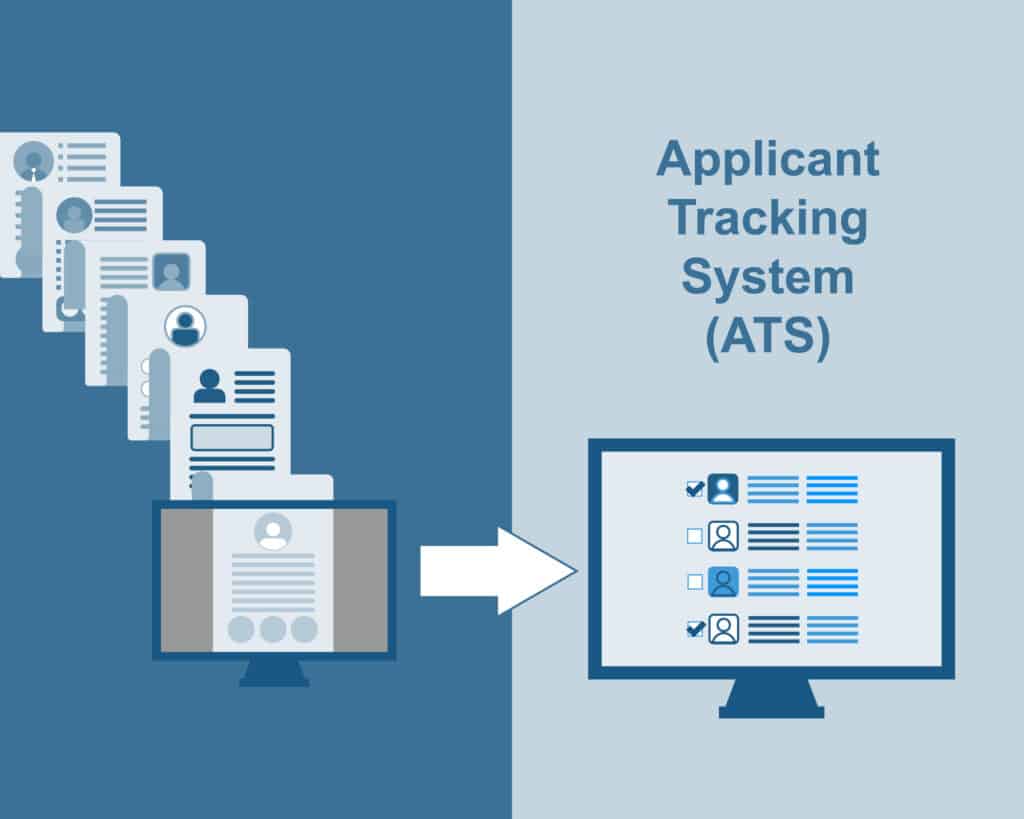You’ve probably seen the stats that say a majority of resumes are screened out by applicant tracking systems (ATS) and never seen by a human. Or you’ve heard that if you don’t use enough of the right keywords, your application doesn’t stand a chance.
While this and other ATS lore may have been true at some point, that’s no longer the case. Applicant tracking systems have come a long way and are far more sophisticated than they once were.
That doesn’t mean these legends are totally wrong, though. For example, keywords do play a role in your job search, just not the way you might think! Today, we’re separating fact from fiction and helping job seekers understand the ins and outs of applicant tracking systems.
This guide will answer your questions about ATSs, including:
- What Is an Applicant Tracking System and What Do They Do?
- Do Applicant Tracking Systems Rank and Reject Resumes Based on Keywords?
- Should I Still Include Keywords on My Resume?
- How Should I Format My Resume for an ATS?
- Why Do I Have to Fill in Fields After Uploading My Resume to the ATS?
- Key Takeaways
What Is an Applicant Tracking System and What Do They Do?
As the name implies, an applicant tracking system (ATS) is a system to track applicants. All kidding aside, the crucial word is tracking. ATSs are mostly a customer relationship manager (CRM) for recruiters, Christine Assaf of HRTact and senior human resources consultant at Archbright explains.
“It’s basically just a program that allows recruiters to be able to keep track of the entire candidate process, usually from start to finish,” she says. “We can review resumes, type up notes, communicate with the candidate, and many other things all from one spot.”
Why Do Companies Use Applicant Tracking Systems?
Not all companies use applicant tracking systems, but many do. “When you have larger organizations or high volume roles, it becomes vital to use an ATS to process the job openings — especially since most recruiters are handling 20 to 30 openings at a time,” says Assaf.
But staying organized isn’t the only reason companies use ATSs. Applicant tracking systems make it easier for candidates to apply for open roles. Instead of emailing or even snail-mailing a cover letter and resume, applicants can upload their documents and receive instant (or near-instant) confirmation that the company has them. And because it’s easy to apply for open roles, companies attract a broader and deeper pool of candidates for each job.
How Do Recruiters Use Applicant Tracking Systems?
Recruiters use applicant tracking systems to stay organized, Margaret Buj, senior talent partner at MixMax, says.
“Imagine if a recruiter working on 10 open positions got even just 50 applications for each role via email,” Buj explains.“It would be a complete chaos to manage the process, whereas, in an ATS, you can quickly review applications, reject candidates, request their availability for an interview, schedule further interviews, and then manage the offer.”
An ATS is also a database of applicants, and some recruiters use this data to learn more about what’s working and what isn’t to improve their hiring efforts. For example, they can see how long it takes to go from posting a job to filling the role. Or they can analyze how well candidates match the job description to fine-tune their job postings.
Do Applicant Tracking Systems Rank and Reject Resumes Based on Keywords?
You’ve probably heard that applicant tracking systems are programmed to look for resume keywords. And you’ve also probably heard that if you don’t include enough of the “right” keywords on your resume, it will be ranked lower, decreasing the odds a human sees it. Or worse, if you don’t include enough resume keywords, the ATS will automatically reject your application.
It is true that some applicant tracking systems can be programmed to screen for specific resume keywords. And it’s also true that some can be configured to rank your resume based on keywords.
However, it is highly unlikely that the reason your application is rejected is due to a lack of keywords. “In my experience, from what I’ve used and know of ATS programs, I’ve never seen one that auto-rejects based on keywords,” says Assaf.
“Most recruiters do actually screen through all the resumes to determine whether or not an applicant is qualified,” she continues. “I think the biggest misunderstanding is that recruiters are experienced in knowing the qualifications, scanning a resume, and being able to decide very efficiently. Many job seekers would attribute the rejection to not being seen, but I’d argue it’s usually due to other reasons. Firstly, not being qualified, but also it can be just timing and competition.”
Buj concurs: “In my 17 years of recruitment experience, we recruiters always looked at every single application. The good thing about an ATS is that you can quickly review all the candidates and either move them to the next state or reject.”
If Resumes Aren’t Ranked, How Are They Sorted?
Assuming the ATS isn’t configured to rank resumes based on keywords, it will sort resumes chronologically, meaning the order they were received. Here’s a screenshot of the backend of an applicant tracking system. Chronologically numbered resumes were submitted to the system and, as you can see in the recruiter view, they are presented in chronological order:
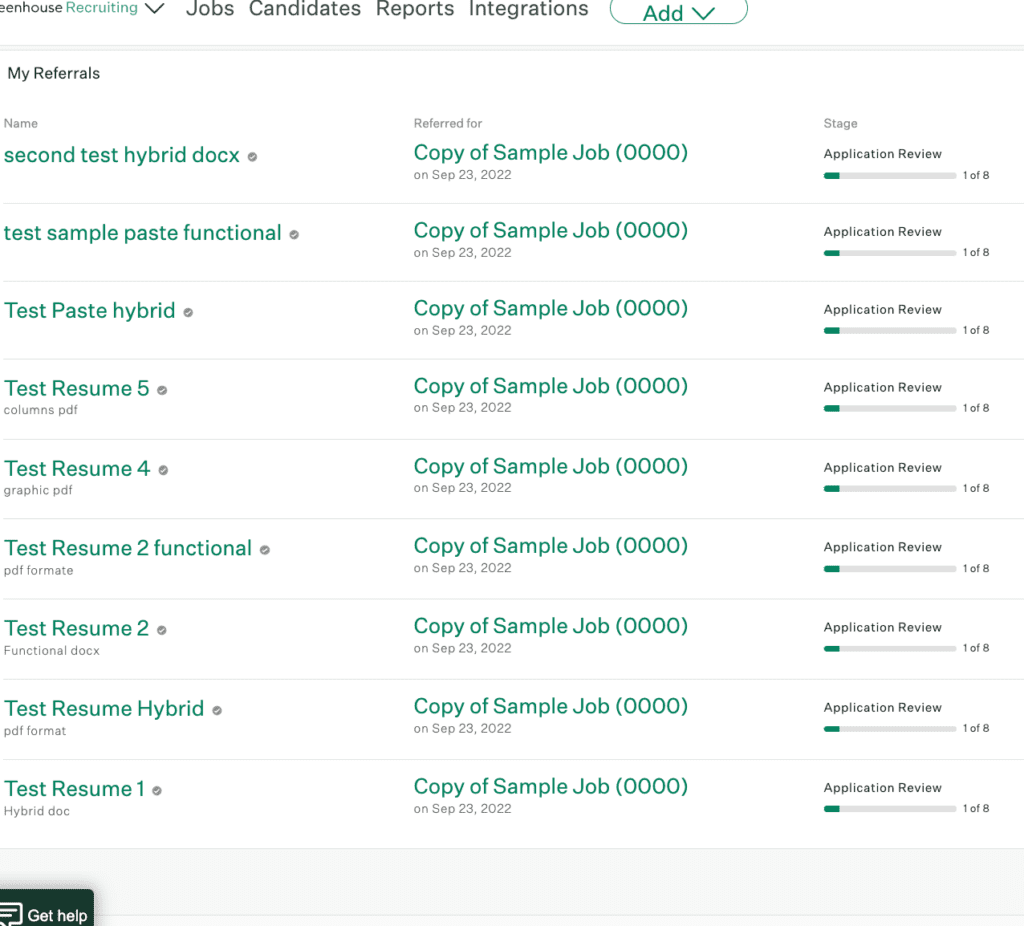
Here’s another view for a different role:
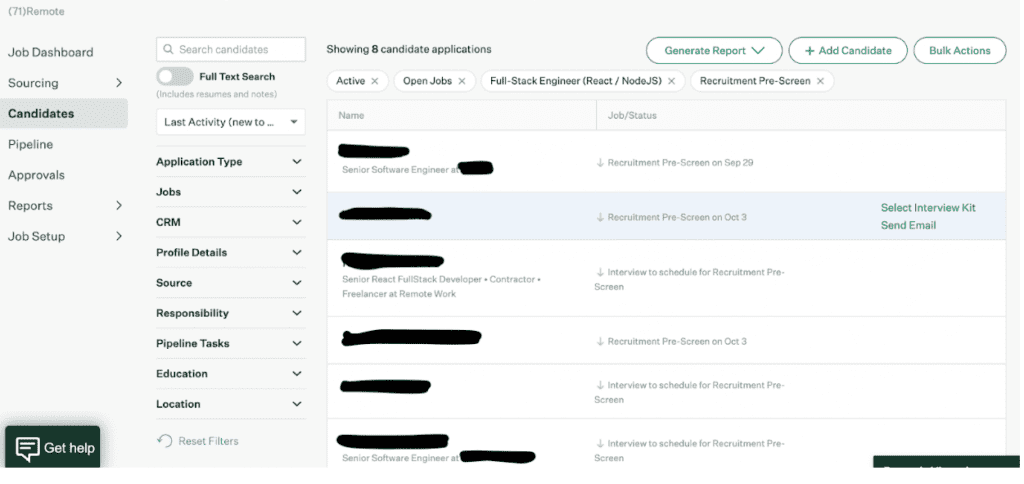
No resume is ranked higher than another. Much like at the deli counter, your application is assigned a number, placed in line, and when your number is called, a human reviews your resume.
What Are ‘Knockout’ Questions?
Knockout questions are designed to quickly eliminate candidates who aren’t suited for the role. Often, they are questions that ask for particular details about your abilities or experiences. Recruiters include these questions on the application because the skills or experience they’re asking about aren’t just related to the role — they are required for it. If you don’t possess them, you’re not a good fit for the position. So, answering no (or something similar) on a knockout question means your application will probably be instantly rejected because you don’t possess something considered the bare minimum required for the role.
However, the applicant tracking system did not reject you. A human programmed it to. “Knockout questions do typically auto-reject an applicant,” says Assaf. “But here’s the thing… it didn’t — the recruiter did. Recruiters work with hiring managers (prior to posting openings) to know what the ‘must-haves’ and ‘need-to-haves’ are. Typically knockout questions are the must-haves.”
Should I Still Include Keywords on My Resume?
At this point, you may think that there’s no point in including keywords on your resume and that your time is better spent writing a resume that’s perfect for all jobs. But resume keywords can play a crucial role in your job search.
“Keywords are vital in applying for jobs,” says Assaf. “Many of us have changed trajectory or had a job title that encompassed many things. Or we have side projects of volunteer work that may be applicable to a particular job, company, or industry. So, keywords are important in that tailoring toward the application can help a person highlight particular experience they already have. This increases the chances that the recruiter and hiring manager may consider them.”
Beyond showing how you’re a good candidate for the role, keywords can also play a critical role in whether or not your application is moved to the next round, but not because you beat the ATS.
“Keywords are important,” Buj says. “I look at them as a recruiter. It’s not so much about one specific keyword, it’s more about their overall experience and match to the job descriptions.”
Not every recruiter knows the technical requirements for a role. While they may specialize in a particular type of recruiting (say, tech), their job is to manage the hiring process from start to finish. As a result, they don’t always know the specifics of what the team needs in the next new hire. So, the recruiter meets with the hiring manager (the person deciding which candidate is most qualified for the role) to create a job description. As the applications come in, the recruiter (and ATS) will scan for keywords in that job description to figure out whether or not the person might be a good fit for the role.
Keywords can also help you get hired for other positions at that company. Not only is an ATS a database, it’s a searchable database. Recruiters sometimes search their applicant tracking systems before posting a job. Why? If you’ve applied for a role, there’s a good chance you’re interested in working for the company. And if your resume matches the criteria of this new role (AKA, the keywords), you could be invited for an interview.
How Should I Format My Resume for an ATS?
There are many types of resume formats. Some are “traditional,” while others have a more modern vibe. And you may have heard that you shouldn’t load the more modern resumes into an ATS, like something with multiple columns or infographics. You may have even heard that you should only use certain fonts to make it easier for the ATS to read.
To be clear, you can load a “fancy” resume into many applicant tracking systems, and the program will read it just fine. Here are a few examples:
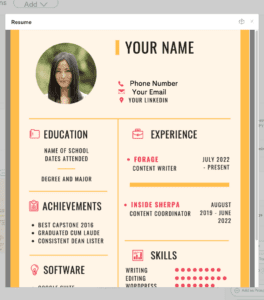
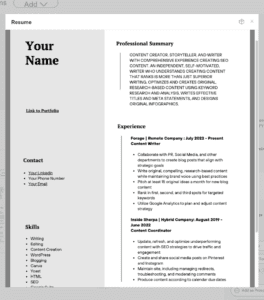
You can even upload a resume with an unconventional font, and the ATS might have no problems reading it:
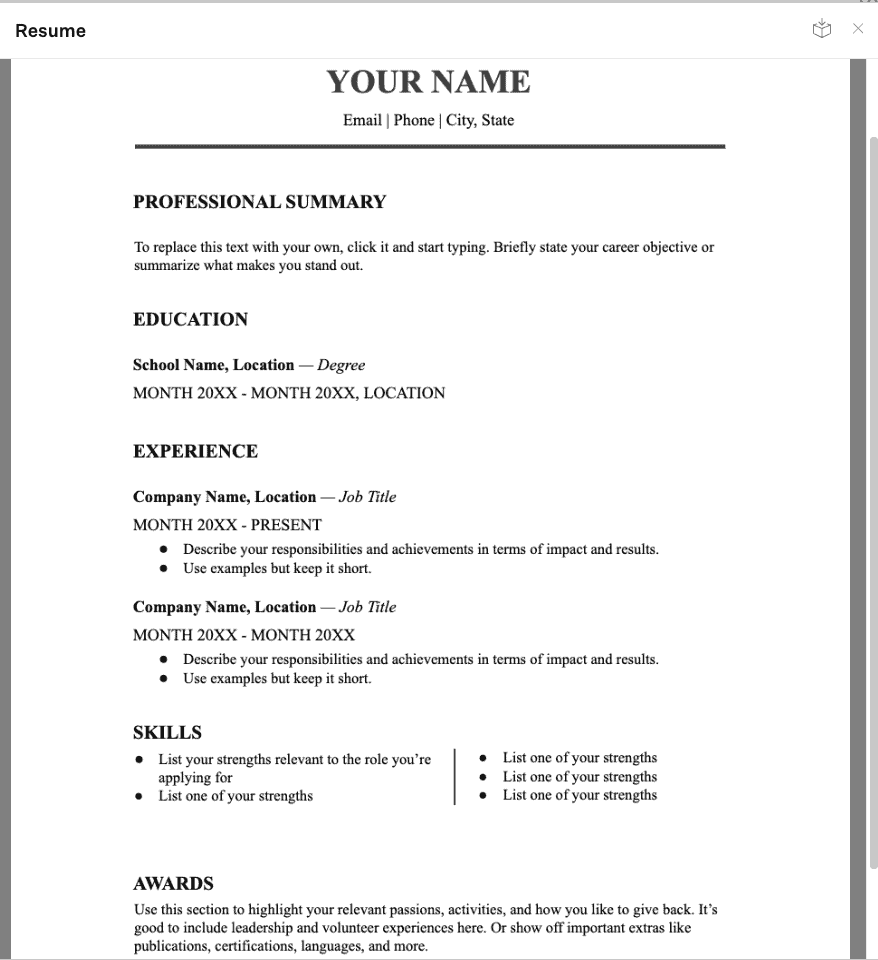
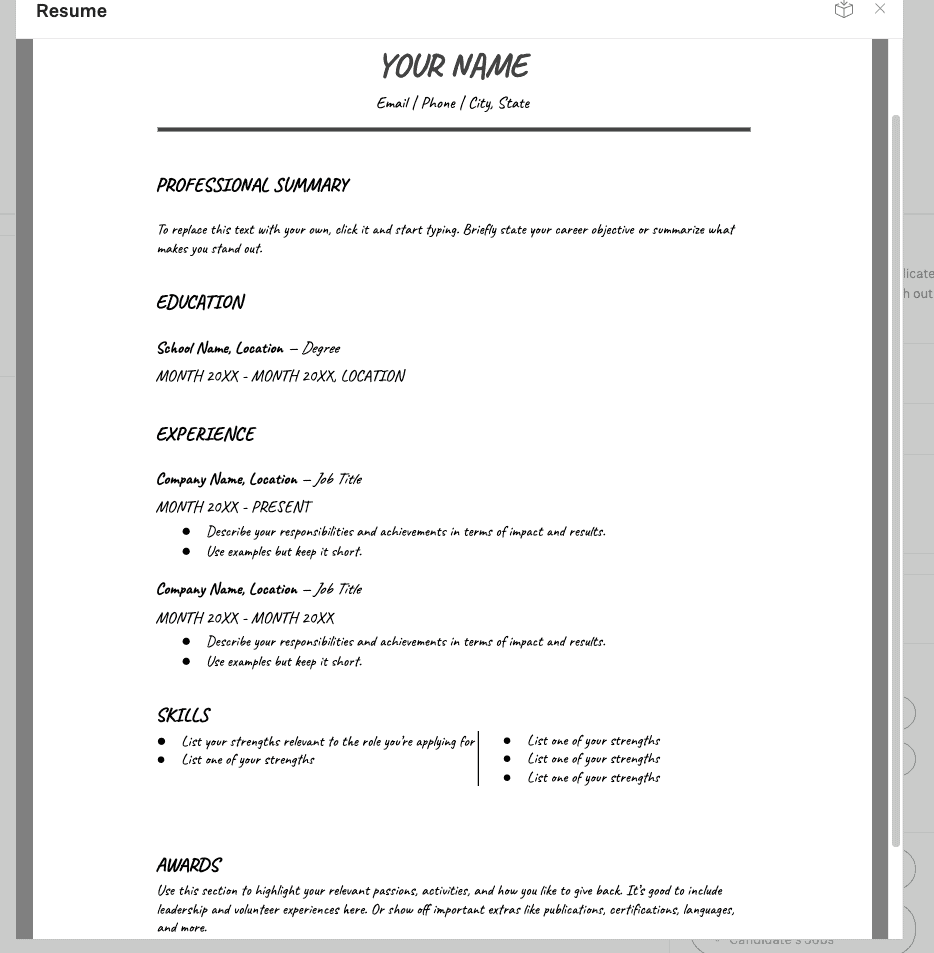
So, you have options! However, you should still consider using a “plain” resume over any other style.
First, not all ATSs can read “fancy” resumes. Some have trouble with columns, tables, and graphics, and some have problems with certain fonts. But there’s really no way to know. Most, if not all, applicant tracking systems are better at reading hybrid and chronological resumes, making them your safest bet. And since most recruiters read resumes digitally these days, going with a sans-serif font makes sense because they are easier to read on screen.
Second, most recruiters scan your resume, looking for the crucial information they need to make a decision about your application. Hybrid and chronological resumes make it easy for a recruiter to quickly and easily find what they’re looking for.
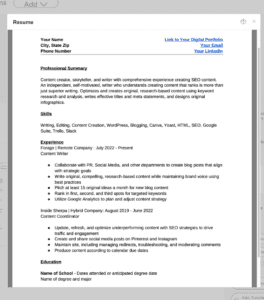
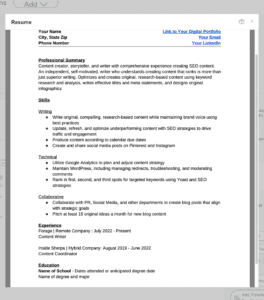
What Kind of File Should I Use?
These days, applicant tracking systems can read all kinds of files but not every type. You can usually find the information near the field where you upload your resume (but not always). In general, systems take .doc, .docx, and .pdf, though some will accept .jpeg or even .png. In many systems, the file type ultimately doesn’t make a difference as long as it’s listed.
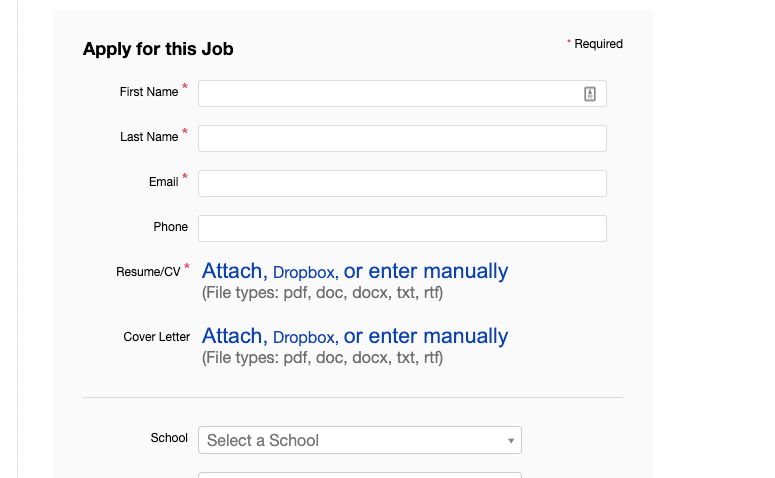
However, Assaf advises job seekers to use .pdf whenever possible. “Sending a resume as a .docx is not secure since it’s editable,” she explains.
If these file formats are not an option, you can almost always cut and paste your resume as plain text. However, there is a good chance the ATS will lose a lot of the formatting:
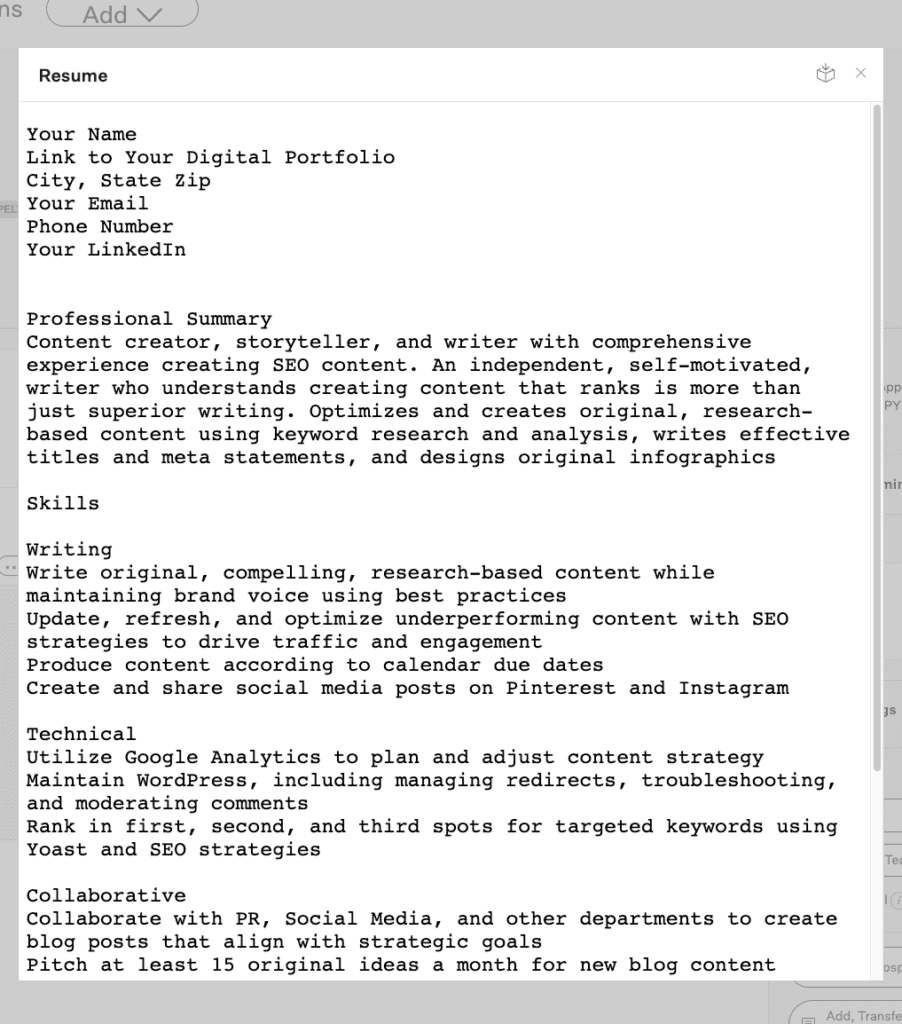
Why Do I Have to Fill in Fields After Uploading My Resume to the ATS?
One of the other things ATSs do is parse your resume. Parsing is when a computer reviews a document and extracts data from it. In the case of an ATS, it parses your resume for key information, but not necessarily keywords. It’s looking for your contact information (and whatever else the recruiter requests).
But not all applicant tracking systems parse resumes the same way.
“Most ATSs will parse resumes based on the traditional resume format — chronological order,” says Assaf. “And some of them have gotten savvy about the nontraditional, skill-based resumes too. But not all ATSs are alike and some have better parsing abilities than others, so that’s why a person may have to upload and then fill out.”
It’s also possible the recruiter programmed the ATS to not prefill those fields for you.
“Not everyone puts their contact information on their resume,” says Elisa Pineda, senior recruiter at Forage. “That is a sure-fire way to confirm we get it.” She also says it’s crucial not to leave those fields blank. Without that information, there’s no way to schedule you for an interview.
Key Takeaways
- Stick with a sans-serif font.
- Chronological and hybrid resumes are ideal.
- .pdf files are best, but .doc and .docx are also acceptable.
- Include contact information on resume and in requested fields when uploading.
- Keywords are important but won’t help you beat an ATS.
So, those are the ins and outs of applicant tracking systems. And if you’re still wondering how to beat the ATS, you really can’t. But you also shouldn’t try. Ultimately, a well-written resume that highlights your accomplishments is what will help you land an interview.
And if you’re ready to start writing your resume, consider enrolling in Forage’s Resume Writing Masterclass and learn how to craft a resume that helps your accomplishments shine.
Image credit: Piscine / Depositphotos.com
